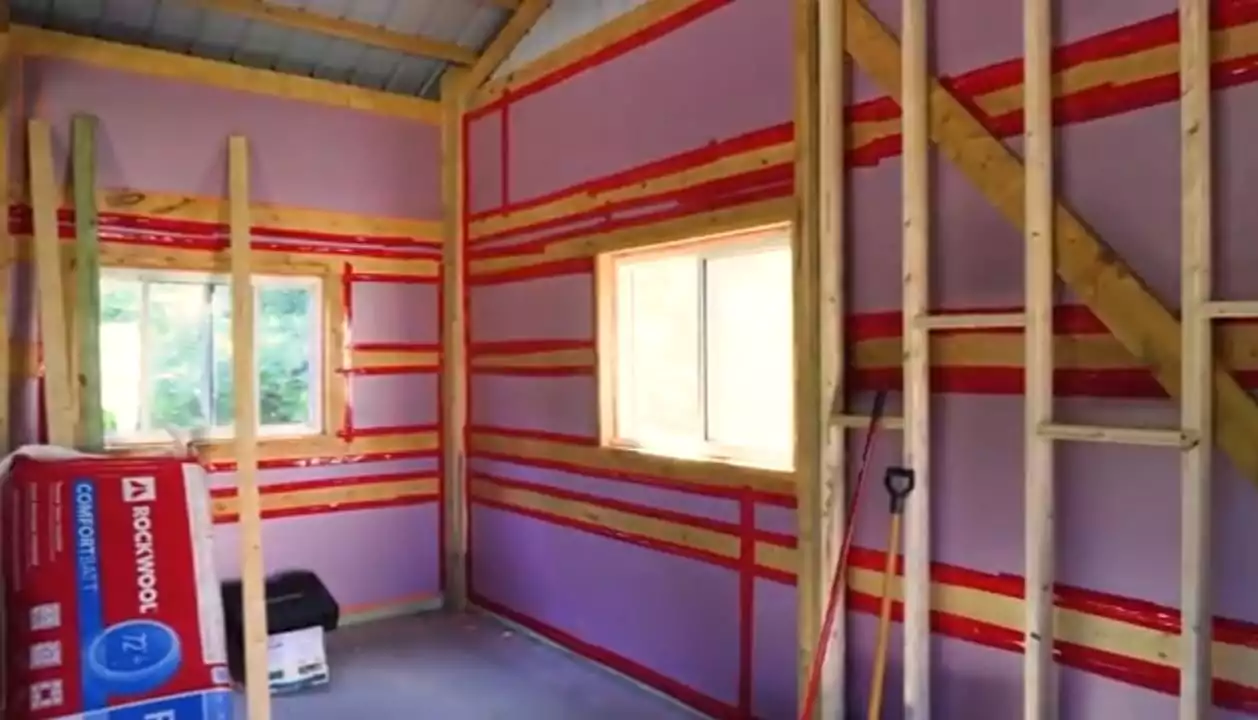Firestone Rigid Insulation is the best choice for residential and commercial building owners due to its best quality. According research and opinion of all insulation experts, Providing a wide range of building materials and solutions, Firestone Building Products is a reputable name in the construction sector. A few of their products that are essential for improving a building’s energy efficiency and general performance are Firestone rigid insulation, Firestone roof insulation, Firestone tapered insulation, and the comparable insulation R-values. Allow us to examine each in more detail:
Featuring a broad selection of excellent roofing and insulation products, Firestone Building Products is a well-known brand between all of that, in the construction sector. Here We are going to examine Firestone rigid insulation in this thorough study, paying particular attention to Firestone tapered insulation and roof insulation. by using this Firestone insulation R-values, we will also investigate the crucial component of insulation performance. In our previous post, Firestone Insulation, we shared detailed information about this post.
Firestone Rigid Insulation
Insulation from Firestone Rigid:
Firestone rigid insulations are the best choice. The main purpose of Firestone rigid insulation is to improve a building’s thermal performance as well as energy efficiency. To create a well-insulated building envelope and act as a barrier against heat gain or loss, rigid insulation boards are essential. Rigid insulation products from Firestone are available in a range to meet different construction requirements.
Materials and Composition:
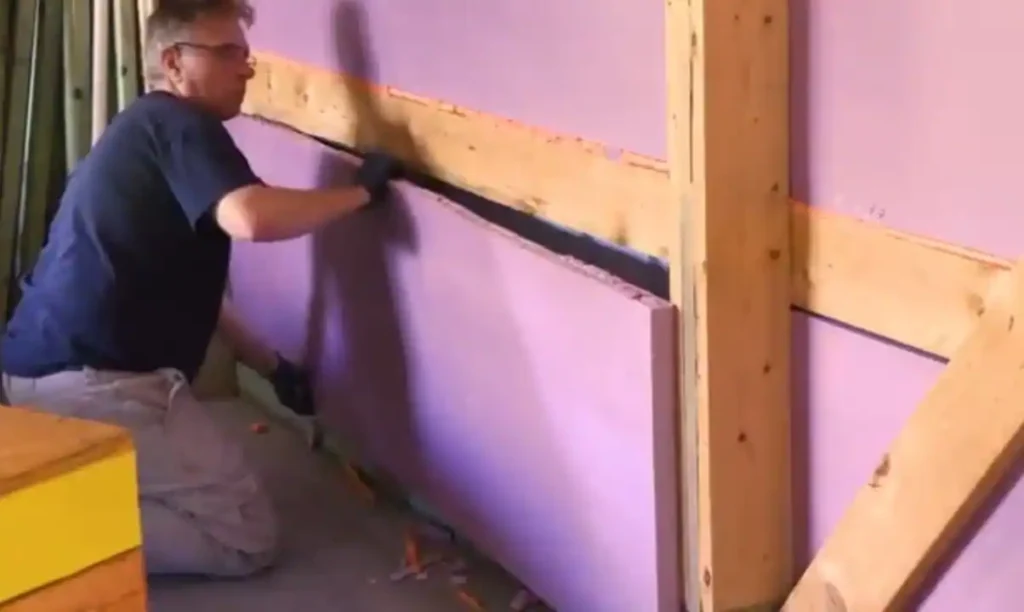
Polyisocyanurate (ISO), expanded polystyrene (EPS), or extruded polystyrene (XPS) are the common materials found in Firestone rigid insulation boards. These materials are very durable and resistant to heat.
Polyisocyanurate insulation, or ISO insulation, is a well-liked solution for construction that is space-conscious due to its high R-value per inch. Firestone’s ISO insulation boards are appropriate for a range of wall and roofing applications and offer a dependable thermal barrier.
The qualities of expanded and extruded polystyrene insulation boards differ; EPS is recognized for its low weight, while XPS is known for its ability to withstand moisture. Firestone gives builders options in both categories so they may select insulation that meets the project-specific specifications of Firestone Rigid Insulation.
According to our research, architects as well as builders both residential and commercial looking for high-performance building materials have a complete option with Firestone rigid insulation, which includes tapering and roof insulation. Because of their energy efficiency standards compliance and customizable nature, Firestone products are a dependable option for a variety of applications. The focus on R-values guarantees that Firestone insulation helps construct ecologically conscious as well as increase thermally efficient buildings. Building flat or sloped roofs, Firestone offers insulation options that put longevity, use, and energy economy first.
Firestone Roof Insulation
Insulation for Firestone Roofs:
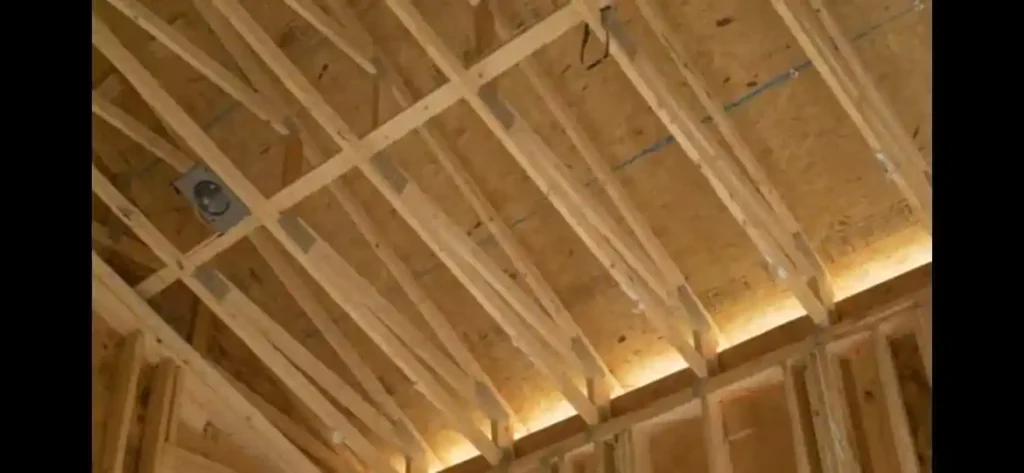
The entire functionality and durability of roofing systems are significantly impacted by Firestone roof insulation. Firestone insulation can able to provide a variety of insulation options for both sloped and flat roofs that are made to accommodate a variety of building requirements.
Insulation for Flat Roofs:
Firestone provides insulating boards that offer a sturdy and energy-efficient base for flat roofs. Usually placed over the roof deck, these boards provide a thermal barrier that aids in controlling the temperature within.
Insulation for Sloped Roofs– Firestone Roof Insulation
To guarantee adequate drainage and avoid water buildup, sloped roofs need a specific type of insulation. The sloping roof insulation materials from Firestone are made to fit different roof pitches while yet offering the best possible thermal efficiency.
Roof Insulation from Firestone Single-Ply Sysytem:
Insulation and weather protection are features of Firestone roof insulation, which is made especially for roofing systems. These are the main attributes and advantages:
Compatibility of Single-Ply Roofing Systems:
When combined with Firestone’s single-ply roofing membranes, Firestone roof insulation produces a seamless and effective roofing system.
Water-Resistant:
Because the insulating material is made to withstand moisture, water intrusion is avoided, extending the life of the roofing system.
Ease of Installation:– Firestone Roof Insulation
Firestone roof insulation is known for its ease of installation, allowing for quick and efficient roofing projects.
Installation Steps for Firestone Rigid Insulation and Roof Insulation:
Preparation:
Ensure a clean and dry substrate.
Verify that the substrate is free from debris, irregularities, and contaminants.
Layout and Marking:– Firestone Roof Insulation
Lay out the rigid insulation panels or roofing insulation sheets according to the design and specifications.
Mark the placement of insulation boards on the substrate.
Cutting:
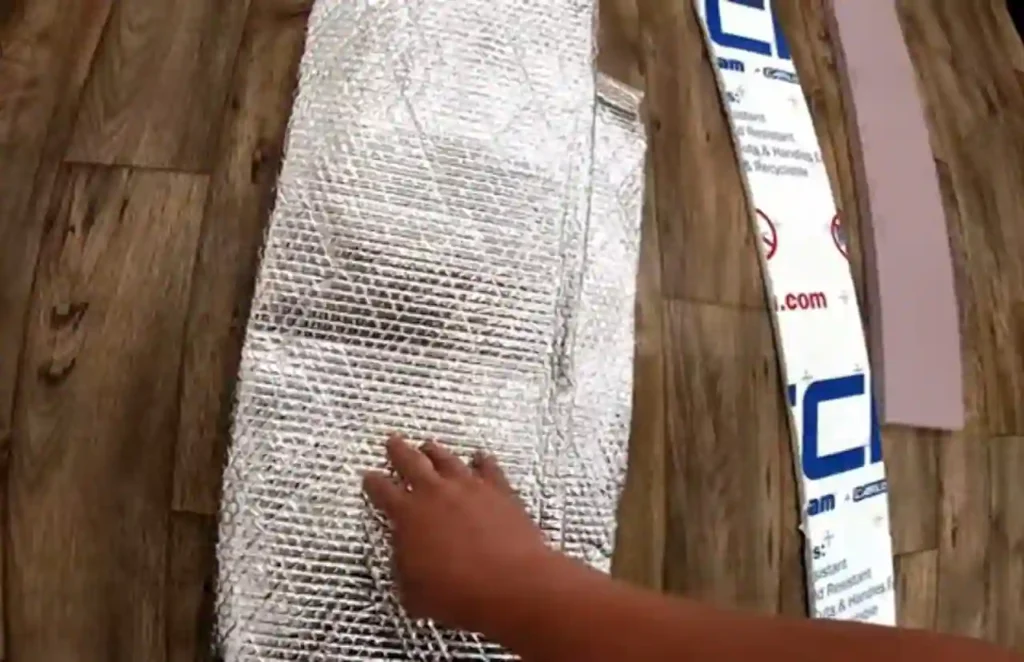
Cut the insulating boards to fit the specified regions using the proper equipment.
For optimal coverage and a snug fit, make sure your cuts are precise.
Application of Adhesive:
Following the manufacturer’s instructions, adhere the substrate with an appropriate adhesive.
Making sure the boards are properly aligned, place the insulating boards onto the adhesive.
Attachment mechanically (if necessary):
Mechanical fastening could be required in specific circumstances. When it comes to fastener type, spacing, and installation, heed manufacturer guidelines.
In roofing systems, seaming:
To stop water intrusion, make sure the insulation boards are properly sealed when used in roofing applications.
For joint sealing, use the seam tapes or adhesives that are advised.
Providing Coverage and Defence:
After the insulation is installed, cover it to keep it safe from bad weather and building activity.
Energy efficiency and long-lasting structural integrity are enhanced by Firestone insulation materials, whether they are utilised in roofing systems or other building applications. Firestone provides excellent thermal performance and durability in their rigid insulation and roofing insulation products.
Firestone Tapered Insulation
An Understanding of Insulation Tapered Firestone. Let’s see What Makes the Tapered Insulation from Firestone Unique?
For flat or low-sloped roofs, Firestone Tapered Insulation is engineered with a deliberate slant to promote appropriate water drainage. Water is directed away from the roof surface by the precisely sculpted slope created by the tapered panels. This invention prolongs the lifespan and improves the overall performance of the roofing system in addition to preventing ponding water.
Important Firestone Tapered Insulation Features:
Exact Engineering:- Firestone Tapered Insulation
Every panel is painstakingly crafted to get the required incline, guaranteeing effective drainage of water.
Superior Materials:
Firestone is known for its high-quality products, and this is also true of its tapered insulation. The materials are strong, resistant to weather, and able to handle various weather conditions.
How to Install Tapered Insulation by Firestone
This type of insulation is easy like Simple Saver Insulation Installation if still you didn’t read this post, then click and read-
Step 1: Planning and Roof Assessment
Perform a comprehensive inspection of the roof before starting the installation process. Determine the locations where water tends to collect and design the tapering arrangement accordingly. Consider the current roof structure and any potential roadblocks that could interfere with the installation procedure.
Step 2: Collect the Required Equipment and Supplies
Make sure you have all the equipment and supplies needed for the installation. This could include fasteners, adhesives, Firestone Tapered Insulation panels, a saw for cutting panels to size, and safety gear including goggles and gloves.
Step 3: Setting Up the Surface
Clear the roof’s surface of any dirt or debris to prepare it
Step Four: Use Adhesive
Apply it to the underside of the tapered insulation panels using an adhesive that works with it. To ensure that the insulation and roof surface are securely bonded, make sure the adhesive is applied evenly.
Step five – Installing the tapered insulation panels
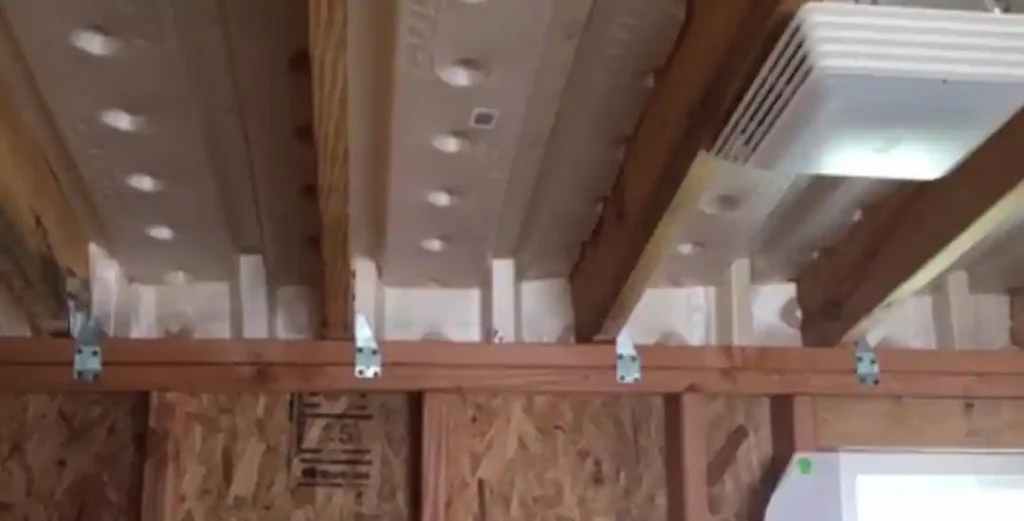
Starting at the lowest position on the roof and working your way up to the highest point, install the tapered insulation panels on the surface. For a solid bond, press each panel firmly into the glue. As directed by the manufacturer, secure the panels in place using the proper fasteners.
Step 6: Assemble and Cut Panels
To guarantee a precise fit, modifications can be required in some circumstances. Cut panels with a saw to the proper dimensions, paying close attention to any irregularities or protrusions in the roof.
Step 7: Examine and Modify the Slope
Make that the tapered insulation’s slope is consistently in line with the intended drainage direction. To ensure that the slope is maintained for effective water runoff, make any necessary changes.
Step 8: Joint Sealing
Seal the connections between tapered insulation panels using a sealer to improve water resistance and stop any possible leaks. To preserve the roofing system’s integrity, this step is essential.
Step 9 -Installing Roof Covering
After the tapered insulation has been firmly installed, install the chosen roof covering material. For flawless integration with the tapered insulation, adhere to the manufacturer’s instructions whether you’re using a built-up roofing system, single-ply membrane, or another combination.
Step 10: Ensuring Quality
Carry out a comprehensive quality check after the installation is finished. Make sure the slope is constant, the tapered insulation is firmly bonded, and all joints are adequately sealed. This procedure is essential to the roofing system’s long-term durability as well as function.
Insulation with Firestone Tapering:
In roofing systems, tapered insulation plays a crucial role, particularly for flat roofs where adequate drainage is necessary. Water pooling and ponding on flat roofs are problems that Firestone tapered insulation systems are intended to solve. The purpose of tapered insulation is to precisely solve the issues associated with water drainage on low-slope or flat roofs. Water is directed toward drainage points by the engineering of Firestone tapered insulation systems, which form a slope on the roof’s surface.
Typically, firestone tapered insulation boards are made of polyiso or other materials that combine slope and insulation into one unit. These systems’ layouts can be modified according to the distinctive needs and specifications of various roofing projects.
Design and functionality:
Water runoff is facilitated by Firestone tapered insulation, which is engineered to form a slope on the roof surface. By keeping water from collecting, this design reduces the possibility of leaks and structural damage while also extending the lifespan of the roofing system.
Customization:
The flexibility to modify the slope in accordance with project requirements is one of the advantages of Firestone tapered insulation systems. This personalization guarantees that the roofing solution is suited to the particular requirements of every building.
Firestone Insulation R Value
When it comes to talking about the best building materials and construction, Firestone is a name that is linked and known for the best quality material with quality and creativity. Their insulation materials are no different, with an emphasis on energy efficiency and built to withstand the demanding requirements of contemporary buildings.
Firestone insulation is distinguished by its remarkable R-value. The R-value fluctuates according to the particular kind of insulation in the Firestone line, but it regularly rates among the best in the business. Because of its excellent thermal resistance, Firestone insulation effectively blocks the flow of heat, resulting in reduced energy use and increased indoor comfort.
R-Value of Firestone Insulation:
An important metric for assessing how well insulation resists heat flow is the R-value, which measures the thermal resistance of various insulation materials. The R-values of Firestone insulation products are either higher than or equal to industry requirements.
R-Value and Energy Efficiency:
Greater thermal resistance, or the ability of the insulation to stop heat transfer, is indicated by higher R-values. By effectively reducing energy efficiency, it dependent on the cooling as well as the heating systems of your insulation material, Firestone insulation materials improve energy efficiency and may result in cost savings throughout the building’s lifespan.
Code Compliance:
The thermal performance of Firestone insulation materials is engineered to meet or surpass building code standards. Attention to these regulations guarantees that buildings with Firestone insulation are not only energy-efficient but also meet industry requirements.
Depending on the particular product, Firestone insulation can have different R-values. Nonetheless, the following broad summary gives an idea of the outstanding heat resistance these goods offer:
R value Of Firestone Tapered ISO 95+ :
With an R-value of up to 5.0 per inch, this roofing insulation solution offers superior thermal resistance for use on commercial roofs.
R value Of Firestone EnvergeTM CI Foil Polyiso:
This continuous insulation solution can able to offers excellent and best thermal performance as well as it is a recommended option for energy-efficient building envelopes, with an R-value of about 6.0 per inch.
Now here It’s important to remember that these figures set industry standards, highlighting Firestone’s dedication to providing insulation solutions that are at the forefront of thermal performance.
Bottom Line Of, Firestone Rigid Insulation And Firestone Tapered Insulation
Firestone insulation is a work as a master performer, as well as taking center stage in an intricate dance of building materials it means, this material is known as nonirrigated material. As well as its high R-value along with dedication to sustainability and quality for humans and the environment also, Firestone is positioned as a leader in the insulation industry. According to insulation experts and our team Choosing Firestone is more than simply a decision whether you’re starting a new building project or thinking about upgrading your insulation; it’s a step towards developing pleasant, energy-efficient, and long-lasting structures. Make Firestone your insulator of choice to up your level of play.
Do let us know how you feel about this information by commenting.
Like our Facebook page and follow for other updates like this.

